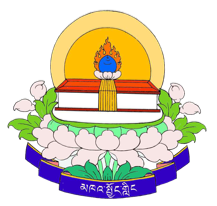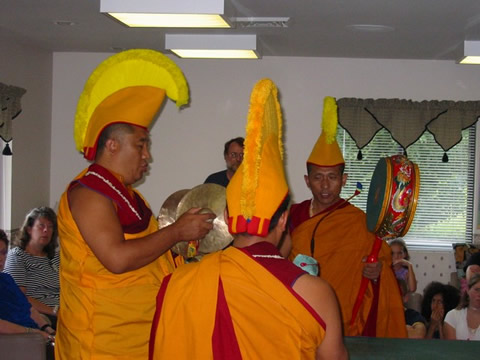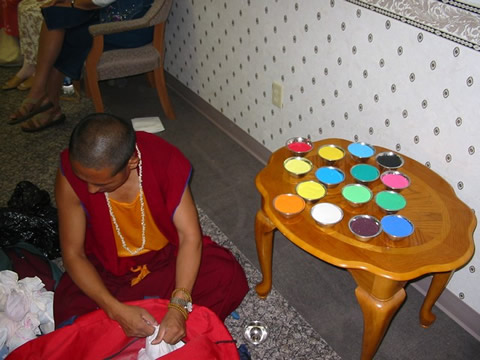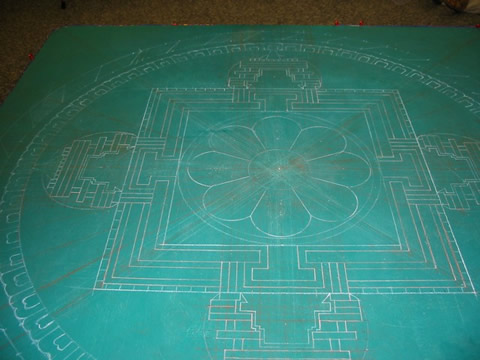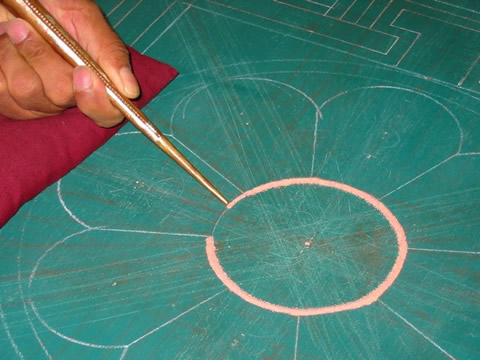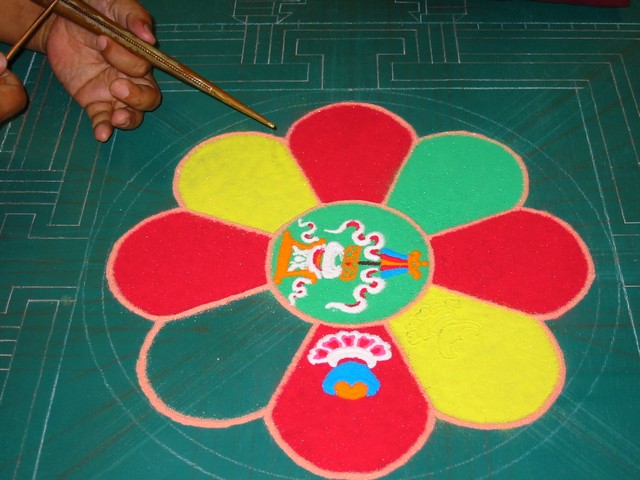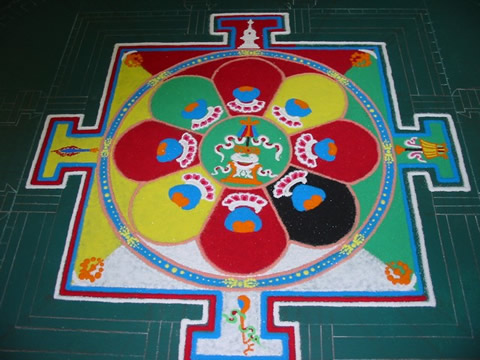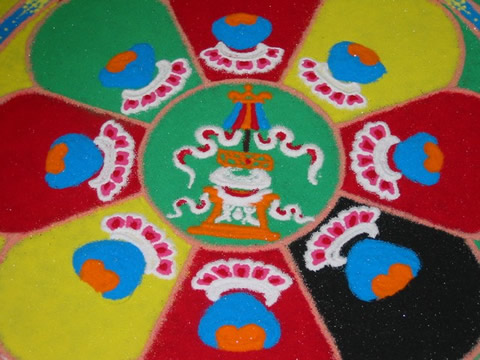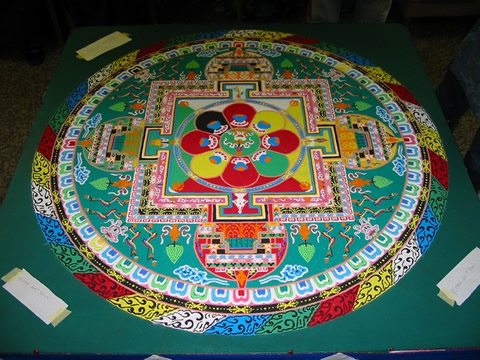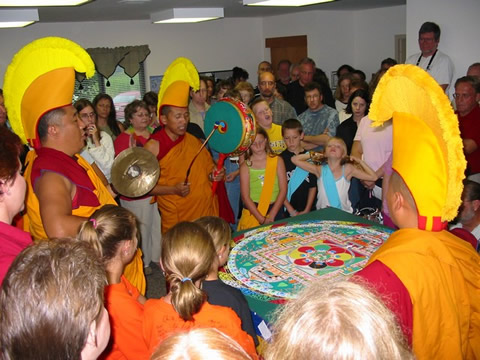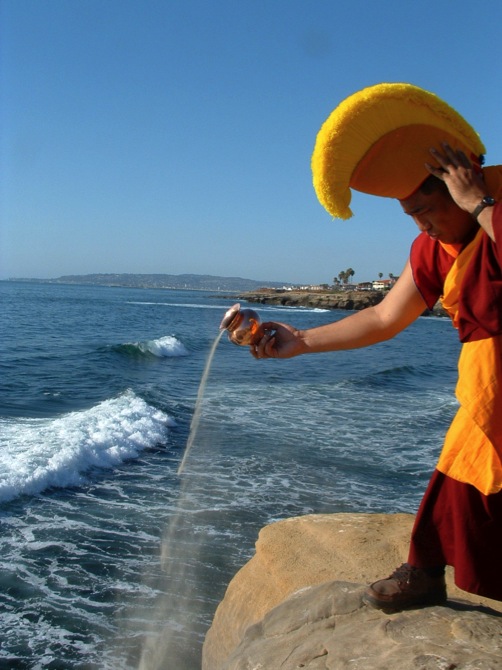Welcome to Khacholing Center | |
|
Main Menu About Us Teachers Gankar Rinpoche Geshe Ahten Geshe Yeshi Choedup Special Events and Current Programs Outreach and Donations Past Events Mandala Dzindu Tours Archives Photos
|
Mandala In 1988, His Holiness the 14th Dalai Lama, the spiritual leader of Tibetan Buddhism allowed the first construction of a mandala in the west to be open to the public. This mandala was the Kalachakra Mandala, and was constructed in sand by the Namgyal Monks from Dharamsala, India, at the Natural History Museum in New York City. His Holiness opened up the viewing of the mandala as a cultural offering, and as a means to preserve Tibetan culture. His Holiness felt that it would be a benefit to the world, as it would enhance the lives of all living beings near the construction site. Of all the artistic traditions of Tantric or Tibetan Buddhism, painting with colored sand ranks as one of the most unique and exquisite. In Tibetan, the art is called dul-tson-kyil-khor, which means "mandala from colored powders." Formed of a traditional prescribed iconography that includes geometric shapes and a multitude of ancient spiritual symbols, the sand-painted mandala is used as a tool for consecrating the earth and its inhabitants.To construct the mandala, millions of grains of sand will be painstakingly laid into place on a flat platform. The mandala is a formal geometric pattern representing the floor plan of a sacred mansion. The actual construction begins with the drawing of the design on the base. The artists measure out and draw the architectural lines using a straight-edge ruler, compass and white ink pen. Once the diagram is laid out, colored sand is applied to the mandala through the end of a metal funnel, known as a chang-bu. The most common substance used in the creation of a dul-tson-kyil-khor is white marble that has been ground and then dyed. Other popular substances are powdered flowers, herbs, grains, and also powdered and colored stone. In ancient times, powdered precious and semi-precious gems were also used. Thus, lapis lazuli would be used for the blues, rubies for the reds, and so forth. In general, all mandalas have outer, inner, and secret meaning. On the outer level they represent the world in divine form. On the inner level, they represent a map by which the ordinary human mind is transformed into enlightened mind. On the secret level, the primordially perfect balance of the subtle energies of the body and the clear light dimension of mind. When the mandala has been completed and its purpose served, the time for dismantling it has arrived. The sands are swept up from the outside toward the center, thus symbolizing how in old age and at the time of death everything once more returns to the primordial source at the center of the heart. The sands are swept up and carried to a nearby body of water where they are deposited. (All who wish can participate in the ceremony). Placing the sands in water, which by nature is connected to all the waters of the world, symbolizes dedication of positive energies generated during the mandala process to universal goodness. In addition to symbolizing the impermanence of things, the dismantling of the mandala symbolizes the ultimate voidness nature of phenomena... how all things come out of nothingness and eventually return to it. Mandalas are created whenever a need for healing of the environment and living beings is felt. The monks consider our present age to be one of great need in this respect and therefore are creating mandalas where requested throughout their North American tours. In brief, many benefits of both a temporal and spiritual nature are produced during the mandala process, and the forces of goodness and light are strengthened. The following photos show the creation of a Medicine Buddha at the Unity Chapel of Light, Tallmadge, Ohio July, 2004
Rinpoche at San Francisco Bay
|
©2010 Khacholing Center | |
